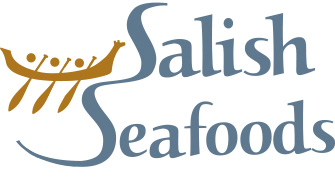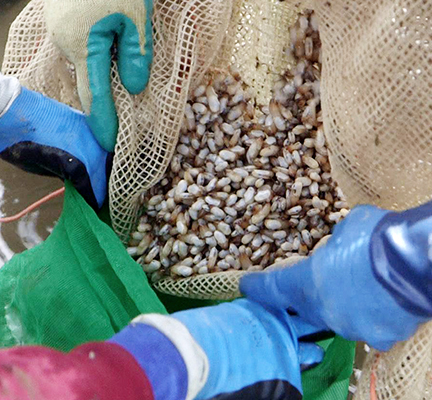Growing Methods
Baby Geoducks being coddled in the nursery . . .
Geoduck seed is transported to Squaxin Island’s undeveloped tidelands. . . no sewage and no pollution. The primary substrate on Squaxin Island is sand with a little bit of silt mixed in. In fact, the beaches are core sampled to make sure there isn’t pea gravel or cobblestone present, to avoid future harvest problems. Once at the beach, the seeds are taken from the coolers and placed into tubes that are placed 10 inches into the ground. In each tube, 3 small holes are created. Three seeds are then placed carefully, one into each of the holes. Net caps are then placed over the tops of the tubes and held in place with a rubber band. These net caps keep out predators, such as flounder, starfish, and crabs. Each year there is a maintenance process called mucking. The nets are taken off and any mussels, shells, or seaweed that worked their way into the tubes, are removed. The nets are placed back on for one more year. After year two, the nets and tubes are removed as the geoduck have worked their way to the maximum depth. With an additional three years, the geoduck will grow to market size and will be harvested, bringing you the freshest geoduck the Puget Sound has to offer.

